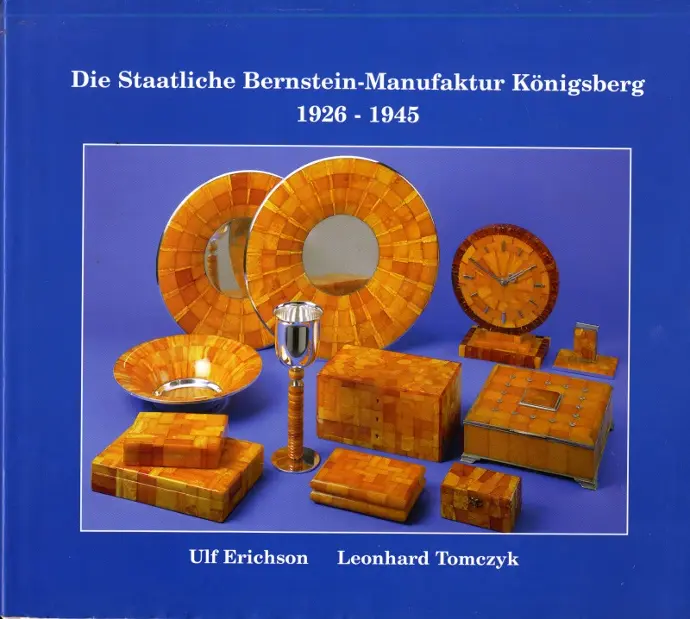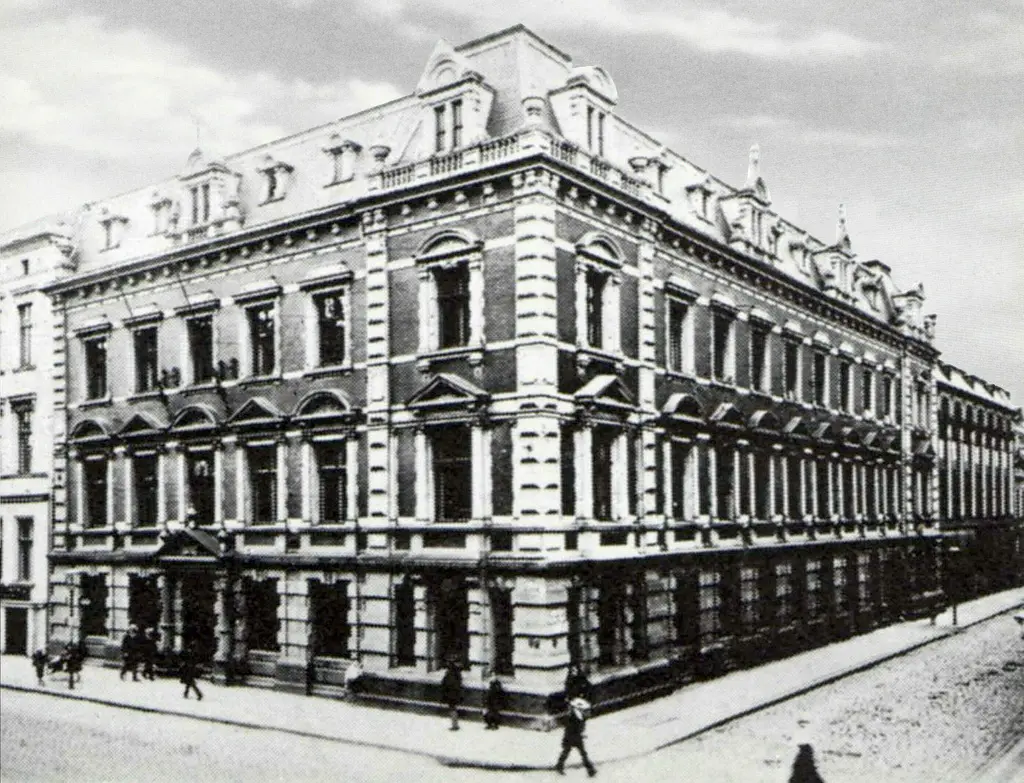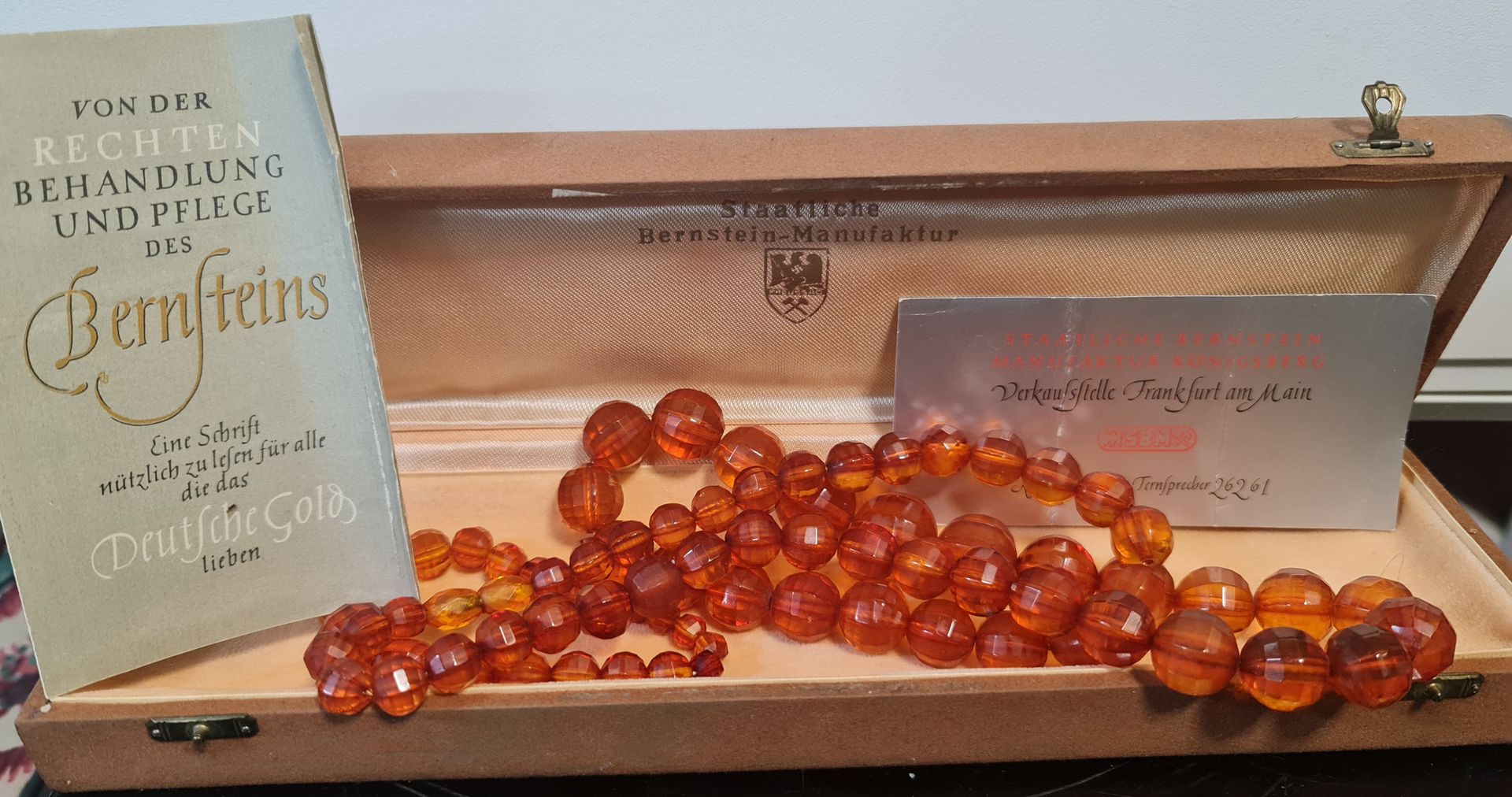Staatliche Bernstein-Manufaktur Königsberg: 1926-1945
THE STATE OF AMBER MANUFACTURE
WE HAVE ARE COLLECTORS AS WELL AS EXPERT WITH THE SBM WE HAVE LARGE COLLECTION AS YOU CAN SEE IN OUR SITE

- Language: German
 The Staatliche Bernstein-Manufaktur Königsberg (SBM), based in Königsberg (East Prussia), was founded in 1926 with significant participation from Preussag AG and initially traded as “Staatliche Bernstein-Manufaktur GmbH”. The company existed until 1945 and at times employed up to 1,500 people. It was the largest amber factory in the world at the time.
The Staatliche Bernstein-Manufaktur Königsberg (SBM), based in Königsberg (East Prussia), was founded in 1926 with significant participation from Preussag AG and initially traded as “Staatliche Bernstein-Manufaktur GmbH”. The company existed until 1945 and at times employed up to 1,500 people. It was the largest amber factory in the world at the time.
 There was a factory with sorting and press shops as well as the Manufactory directorate here. The number of the Manufactory workers was 2650 by the end of the 1930s.
There was a factory with sorting and press shops as well as the Manufactory directorate here. The number of the Manufactory workers was 2650 by the end of the 1930s.
A special attention was given to the quality of making and high artistic level of amber articles. From the beginning of the 1930s a wide advertising campaign was launched aimed at promotion of the «German gold» within the country. The "Day of Amber" was celebrated in Palmniken where huge models of the production were shown during a gorgeous parade.
The Manufactory opened its representative offices in Paris, London, Vienna, Brussels and New York. The articles of the Manufactory gained international acceptance also due to participation in numerous exhibitions where they were repeatedly awarded with high rank prizes.
The State Amber Manufactory became the largest in the world enterprise for extraction and treatment of amber. A high artistic level of its mass production played a significant role in the promotion of amber articles far beyond the borders of Germany.
The Products of the Manufacture
 The various range of the articles produced at the Manufactory was divided into five groups.
The various range of the articles produced at the Manufactory was divided into five groups.
The most numerous group included jewellery articles. The other group comprised of the household articles. The third consisted of the articles of religious faith. The fourth group involved souvenirs, commemorative medals, sports prizes as well as various badges.
However, the production was not limited to only serial products. The fifth group included original works of art, sculptures and raised works from amber. And the famous models of amber sailing vessels became truly rarities.
 A special significance in making highly artistic articles was given to returning to the traditions of old German craftsmen of the 17th-18th centuries. For this purpose a famous sculptor Hermann Brachert was invited for the position of an artistic advisor in 1930. His articles conjoined a combination of a harmonious splendor and constructive rationality of the Bauhaus school of design.
A special significance in making highly artistic articles was given to returning to the traditions of old German craftsmen of the 17th-18th centuries. For this purpose a famous sculptor Hermann Brachert was invited for the position of an artistic advisor in 1930. His articles conjoined a combination of a harmonious splendor and constructive rationality of the Bauhaus school of design.
The same can be said about Jan Holschuh, Brachert's follower. After becoming an artistic head of the Manufactory in 1933, he set an aim of widening the production programme and initially setting a high artistic standard for the articles. Under his leadership and on the basis of his designs the Manufactory started making high quality and expensive household articles along with mass production.
 Caskets, various in form and purpose, made up a considerable group of articles: from small boxes with amber inserts on covers to large mosaic cabinets.
Caskets, various in form and purpose, made up a considerable group of articles: from small boxes with amber inserts on covers to large mosaic cabinets.
The mosaic was made in the form of a vegetative pattern characteristic of art deco or in the fashionable functionalist style from rectangular sheets tightly adjusted to each other.
Tendencies that existed in the applied art of that time promoted opening new possibilities for using the material and establishing the style characteristic of the Manufactory's articles including the distinctive mosaic composition.
Take a look at our amazing collection available for purchase: Click Here